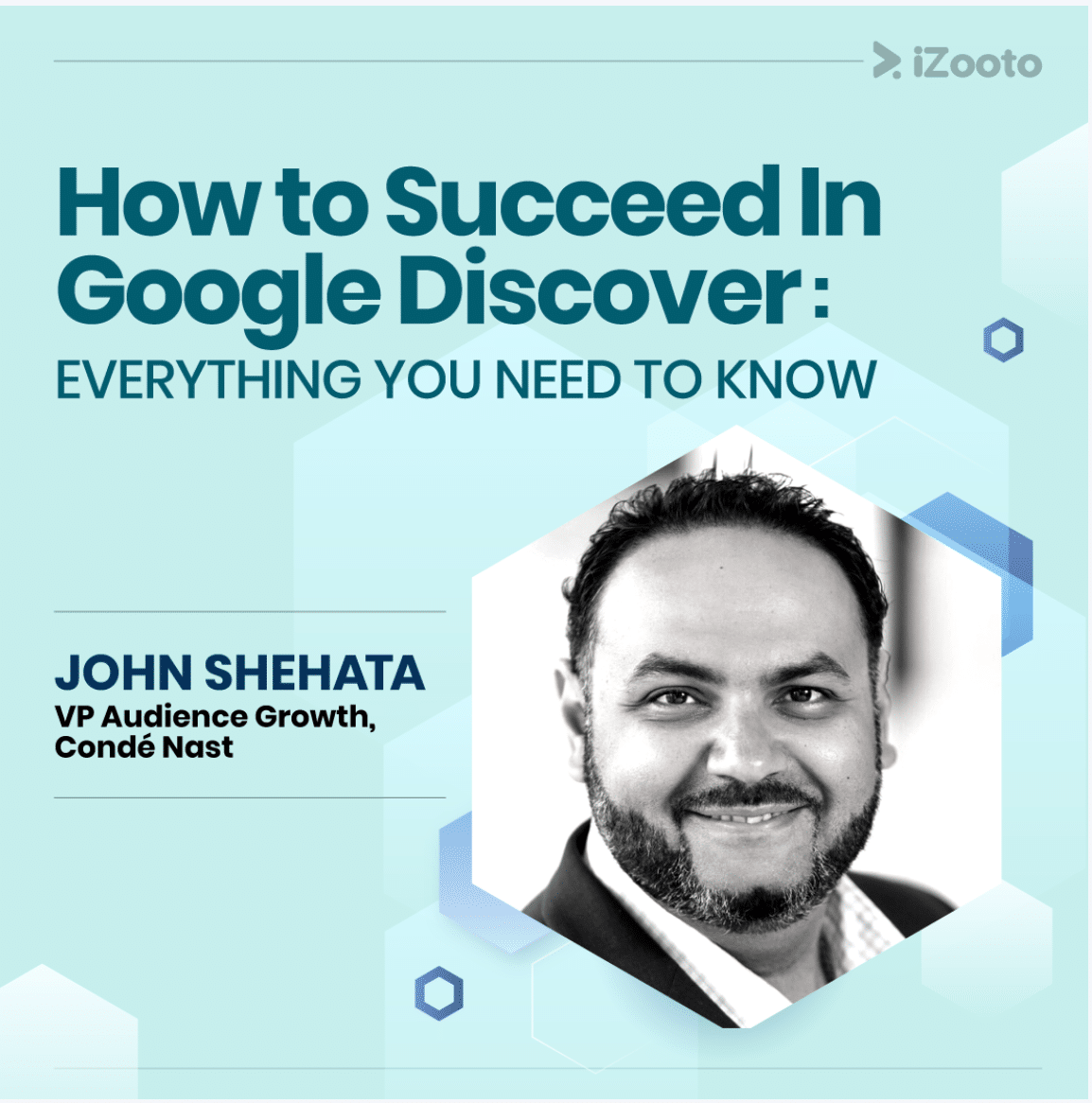
How to leverage Google Discover to grow traffic
If I told you there was a way to 7x your Google click-through-rate (CTR), would you believe me? What if I said this was possible without spending a cent on paid search?
Now you’re convinced I’m trying to entice you into some dodgy digital marketing scam.
Except I’m not. I’m talking about a free tool that some publishers say drives 90% of their organic traffic.
It’s called Google Discover.
Previously known as Google Feed, that’s exactly what it is: A ‘smart’ mobile feed filled with personalised content recommendations. And it already boasts over 800 million users.
Build incremental traffic. No search required.
With Google Discover, there’s no query box. Google already knows so much about you, it can predict what you need before you’ve realised you need it.
To test this theory out, I decided to take a look at my own Google Discover feed. This is what I found:
- “Queensland’s border will remain closed to Victoria and greater Sydney”
- “A perfect storm brewing in Australian property”
- “Creating a Home Retreat: Finding Freedom Wherever You Are”
- “4 Ways to Upgrade your Iced Coffee”
- “Kia’s LandCruiser rival could come with military credentials”
Given that I’m a sleep-deprived Sydneysider who just bought a 4×4 and I’m trying (unsuccessfully) to move to Queensland, that’s a pretty accurate assessment of my content needs. It might not offer the most optimistic of reading lists, but it’s bang on the money. And while it’s too late for Kia to benefit, I’m intrigued enough to visit Car Advice to discover what I’m missing.
Would I have found such a plethora of relevant recommendations using a traditional Google search? Probably not. I’m usually too vague (and sleep starved) to ever search for what I truly need.
Drive traffic and build authority
Given the precision of targeting, it’s no surprise the engagement rate of Google Discover content is so high.
So the question on every publisher’s lips is ‘how can we leverage Google Discover to increase web traffic and increase brand authority?’
How can publishers use Google Discover?
Unfortunately, the answer isn’t so straightforward. Google algorithms have made optimising for Discover somewhat a mystery. As an example, this is what Google Discover did for one of our publishing clients recently:
How did this happen?
A magical alchemy of strong visuals and authoritative authoring. Plus a random choice of topic that audiences were unusually fixated with in mid-September!
We’ve seen too many publishers go down the rabbit hole and become obsessed by their daily Discover stats. It’s paralysing – and it will never be as stable or predictable as organic traffic. There are so many variables. Every user gets a personalised news feed, so it’s mostly of your control.
We try to set expectations that Google Discover isn’t a code that’s easy to crack. But it can be a great addition to your existing traffic.
In a recent webinar, Condé Nast’s John Shehata, deep dives into the specifics of Google Discover. While it remains impossible to game the system, Shehata shares some smart suggestions for optimising your content.
There’s so much gold in the webinar; it’s well worth an hour of your time.
Here’s a quick snapshot of our five most useful Google Discover takeaways for digital publishers:
Google Discover isn’t a replacement for search
Google Discover is essentially a social feed. It matches published content with audience interests, using search history, location data and device information. Perhaps AI will someday make the query box redundant. But for now, search should still feature heavily in your digital strategy.
Tell it differently
Diversity in journalism is a hot topic right now-and Google is all over it. While timely and trending stories will always perform well, can you find a way to tell the story in a different way or from a fresh perspective? And steer clear of clickbait. Make your page titles informative and engaging but never sensationalist.
AMP up your image quality
To optimise for Google Discover, you must select good quality images of at least 1200px. You could also consider using AMP (accelerated mobile pages). In fact, a quick desktop study by Shehata revealed that 60% of his feed featured AMP results. Due to their low data volume, load times for AMP pages are significantly shorter than HTML pages. This improves audience engagement and leads to less bounce and higher conversions.
It’s also worth remembering that Google Discover is a mobile service, so ensure all your content is mobile optimised.
Demonstrate expertise, authority and trust
Despite being an interest-based rather than news-based tool, Google Discover shares many similarities with Google News. So ensure your content is recognised as authoritative and trustworthy.
You achieve this in exactly the same way as traditional SEO:
- Include as much author information as possible (bylines, links to social profiles, other interviews and articles)
- Add context to images with appropriate alt text and captions
- Ensure that editorial always outweighs advertising
- Steer clear of anything remotely dangerous, lewd or offensive
Google Discover and social media
It’s impossible for publishers to optimise for individual audiences. However, you can optimise for audience groups. And where do audience groups hang out? Social media.
Google Discover may have a fondness for high-performing social stories. To capitalise on this preference, ensure your social sharing buttons are properly installed, easily visible and looking sharp. There are some excellent WordPress plugins that allow you to edit social media metadata, and provide a nifty analytics dashboard. Another of the myriad reasons why WordPress is the best CMS for digital publishers. You should also constantly monitor the social performance of your (and others’) content, and build your editorial strategy around trending or buzzworthy topics.
4 ways to optimise your WordPress site for Google Discover
If your chosen CMS is WordPress, here are some practical ways to configure your site. These will increase the likelihood of your content of surfacing in the Google Discover feed.
Have a fast website
Speed and SEO are synonymous. There are many factors that go into a fast website. These include page caching, high performance web hosting and leveraging CDNs such as CloudFlare. But also keep an eye on adtech and javascript bloat.
READ MORE: Server-side tagging in Google Tag Manager: What it means for publishers
Valid schema data
Schema data makes it easier for Google to read and parse your articles. WordPress SEO plugins such as Yoast do a pretty good job out-of-the-box, but you’ll need to pay particular attention to configuration as there are a number of variations.
Avoid custom image sizes. Ensure your article image attributes are 1200px. Those images should contain a minimum of 800k total pixels and be presented in aspect ratios of 16:9, 4:3, and 1:1.
Use Google’s Rich Results testing tool to confirm individual articles are working as expected.
XML sitemaps
This isn’t directly tied to Google Discover traffic but healthy XML sitemaps are vital for media organisations with large WordPress sites. XML sitemaps ensure Google can easily crawl your new content as it’s published.
Yoast has an automatic sitemap generation feature. However, it’s likely you’ll encounter performance bottlenecks if you’re running a major site.
These can be avoided with some simple workarounds, which we share in this guide: How to scale Yoast sitemaps for large digital publishers
AMP for WordPress
One of the many reasons we work with WordPress as a publishing platform is because of the healthy plugin eco system it offers.
This extends into deploying an AMP site.
The official AMP for WordPress plugin gives you the tools to build a simple AMP site easily, but also acts as a powerful framework to build highly bespoke AMP website that allows for flexibility with AdTech and other common integrations for publishers.
In summary
If you’re currently optimising for Google News, your Google Discover strategy is already halfway there. Just keep doing what you’re doing and use the same principles when creating evergreen content.
Make this a habit and you may well see traffic surging to your newly ‘discovered’ site.
“We first make our habits and then our habits make us.” – John Dryden


